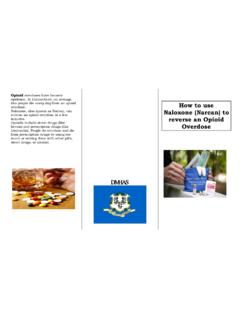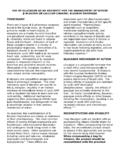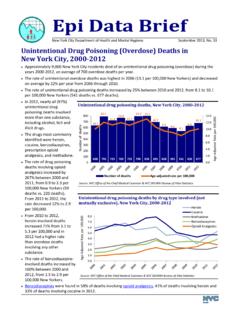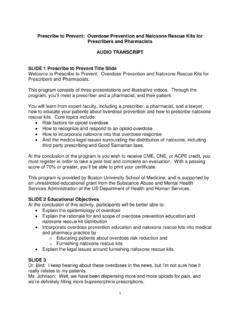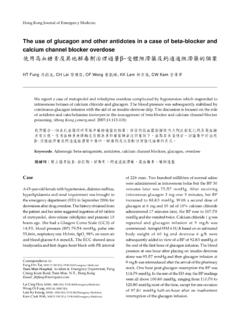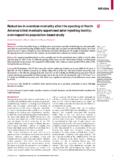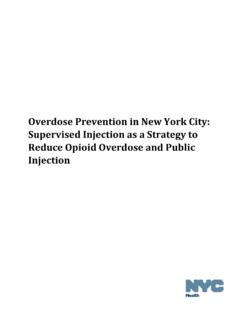Transcription of 2016 Washington State Interagency Opioid …
1 2016 Washington State Interagency Opioid working Plan INTRODUCTION Washington State is currently experiencing an Opioid abuse and overdose crisis involving prescription opioids and heroin. Approximately 600 individuals die each year from Opioid overdose with an increasing proportion of those deaths involving heroin. The largest increase in heroin overdose deaths from 2004 to 2014 occurred among younger people ages 15 to 34 years. According to a recent statewide survey of syringe exchange clients, 57% of those who inject heroin said they were hooked on prescription opiates before they began using State government agencies, local health departments, professional groups and community organizations across Washington State have been actively building networks and capacity to reduce morbidity and mortality associated with opioids.
2 Several agency members of the Department of Health s Unintentional Poisoning Workgroup collaborated to develop a statewide working plan for Opioid response. The WA State Interagency Opioid working Plan outlines the goals, strategies and actions that are being implemented by a number of stakeholders across diverse professional disciplines and communities. This working plan outlines both current efforts as well as new proposed actions to scale up response and will be regularly updated as the epidemic and response evolve over time. PLAN OVERVIEW The WA State Interagency Opioid working Plan includes four priority goals: 1. Prevent Opioid misuse and abuse. 2. Treat Opioid abuse and dependence. 3. Prevent deaths from overdose . 4. Use data to detect Opioid misuse/abuse, monitor morbidity and mortality, and evaluate interventions.
3 Collectively, the strategies and specific actions to achieve these goals target: Individuals: Those who use prescription opioids and/or heroin at any level of use or dependence. Special populations include pregnant women, adolescents and clients of syringe exchange programs. Professionals: Includes health care providers, pharmacists, first responders/law enforcement, social service providers and chemical dependency professionals. Communities: Includes family members, tribes, local municipalities, schools, community prevention coalitions and citizen groups. Systems: Includes policies, financing structures, and information systems in medical, public health, criminal justice and other fields. 1 2015 Drug Injector Health Survey, University of Washington and Public Health Seattle & King County.
4 COORDINATION AND IMPLEMENTATION Partners from all sectors are driving forward implementation of these strategies including State -level agencies and policy makers, professional associations, law enforcement, local health departments, tribal authorities, service providers, community coalitions and many others. The following stakeholders have expressed a particular interest and commitment to addressing Opioid use and overdose prevention: State -level agencies: Department of Health (DOH) Department of Labor & Industries (L&I) Department of Social and Health Services (DSHS) Division of Behavioral Health and Recovery (DBHR) Health Care Authority (HCA) WA Poison Center (WPC) Office of Superintendent of Public Instruction (OSPI) WA State Patrol (WSP) Northwest High Intensity Drug Trafficking Area (NWHIDTA) Department of Corrections (DOC) US Attorney General s Office (USAG) Administrative Office of the Courts (AOC) Prevention Enhancement Policy Consortium Professional associations.
5 Agency Medical Directors Group (AMDG) WA State Medical Association (WSMA) WA State Hospital Association (WSHA) WA State Nurses Association (WSNA) WA Chapter-American College of Emergency Physicians (WA-ACEP) Priority GoalsGOAL 1:Prevent Opioid misuse and 2: Treat Opioid 3: Prevent deaths from 4:Use data to monitor and Actions Improve prescribing access to naloxone to people who use and expand data sources. WA State Pharmacy Association (WSPA) WA State Dental Association (WSDA) WA Society of Addiction Medicine (WSMA) Dental Quality Assurance Commission (DQAC) Medical Quality Assurance Commission (MQAC) Nursing Care Quality Assurance Commission (NCQAC) Board of Osteopathic Medicine and Surgery (BOMS) Podiatric Medical Board (PMB) Bree Collaborative (Bree) WA State Association of Police Chiefs (WASPC) WA Association of Prosecuting Attorneys (WAPA) Academic institutions: University of Washington : Alcohol and Drug Abuse Institute (UW ADAI) Center for Opioid Safety Education (COSE) Local entities.
6 Local Health Jurisdictions County drug and alcohol services coordinators Drug treatment and mental health service providers Syringe exchange programs Tribal authorities Community drug prevention coalitions and task forces Four workgroups have been designated to coordinate the action steps under each of the four goals of the plan. Workgroups communicate and meet regularly to assess progress and identify emerging issues that require new actions. The lead contacts for each workgroup are: Prevention Workgroup (Goal 1): Julia Havens, Division of Behavioral Health and Recovery Jaymie Mai, Department of Labor & Industries Treatment Workgroup (Goal 2): Thomas Fuchs, Division of Behavioral Health and Recovery Naloxone Workgroup (Goal 3): Susan Kingston, UW Center for Opioid Safety Education Data Workgroup (Goal 4): Kathy Lofy, Department of Health Last updated 6/5/16 4 GOALS AND STRATEGIES GOAL 1: Prevent Opioid misuse and abuse.
7 STRATEGY 1: Promote use of best practices among health care providers for prescribing opioids for acute and chronic pain. Lead Party Status Educate health care providers on Agency Medical Directors Group Interagency Guideline for Prescribing Opioids for Pain and the Washington Emergency Department Opioid Prescribing Guidelines to ensure appropriate Opioid prescribing. L&I Ongoing Promote the use of the Prescription Drug Monitoring Program (PMP), including use of delegate accounts, among health care providers to help identify Opioid use patterns, sedative co-prescribing, and indicators of poorly coordinated care/access. DOH, Bree Ongoing Train, coach and offer consultation with providers on Opioid prescribing and pain management ( , TelePain video conferencing and e-newsletters). HCA, COSE Ongoing Partner with professional associations and teaching institutions to educate dentists, osteopaths, nurses, and podiatrists on current Opioid prescribing guidelines.
8 COSE, Bree Ongoing Build enhancements in the electronic medical record systems to default to recommended dosages, pill counts, etc. Bree Ongoing Require health plans contracted with the Health Care Authority to follow best practice guidelines on Opioid prescribing. Bree, HCA Ongoing Encourage licensing boards of authorized prescribers to mandate CEUs on opiate prescribing and pain management guidelines. Boards, DOH Ongoing Advocate for reimbursement of non- Opioid pain therapies. Bree Ongoing STRATEGY 2: Raise awareness and knowledge of the possible adverse effects of Opioid use, including overdose , among Opioid users. Lead Party Status Distribute counseling guidelines and other tools to pharmacists, chemical dependency professionals, and health care providers and encourage them to educate patients on prescription Opioid safety (storage, disposal, overdose prevention and response).
9 DBHR, COSE Ongoing Provide targeted health education to Opioid users and their social networks through print and web-based media. COSE Ongoing Promote accurate and consistent messaging about Opioid safety and addiction. COSE Ongoing Promote national social marketing campaigns on prescription opiates at the State level. DBHR Pending Conduct an inventory of existing patient materials on medication safety for families and children. Develop new materials as needed as tools for health care providers and parents. DBHR Ongoing 5 STRATEGY 3: Prevent Opioid misuse in communities, particularly among youth. Lead Party Status Work with community coalitions to implement strategies to prevent youth prescription drug misuse from the Substance Abuse Prevention and Mental Health Promotion Five-Year Strategic Plan. ( ) DBHR Ongoing Identify prevention funds from which mini grants can be awarded to organizations and coalitions to implement key actions of the State Opioid Response Plan.
10 DBHR Ongoing STRATEGY 4: Promote safe home storage and appropriate disposal of prescription pain medication to prevent misuse. Lead Party Status Educate patients and the public on the importance and ways to properly store and dispose of prescription pain medication. DBHR Ongoing Promote the use of home lock boxes to prevent unintended access to medication. DBHR Ongoing Explore funding and regulatory enhancements to sustain and evaluate Drug Take Back programs. DBHR Ongoing STRATEGY 5: Decrease the supply of illegal opioids. Lead Party Status Partner with law enforcement to decrease illicit distribution of opioids. DOH Ongoing Increase the number of investigations on unlawful prescribing practices. Coordinate with law enforcement if prescribers are arrested so that patients can be adequately treated. WSP Pending Educate law enforcement on the PMP and how it works.
